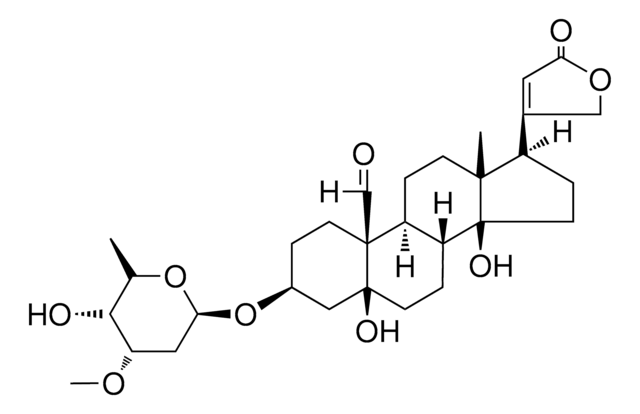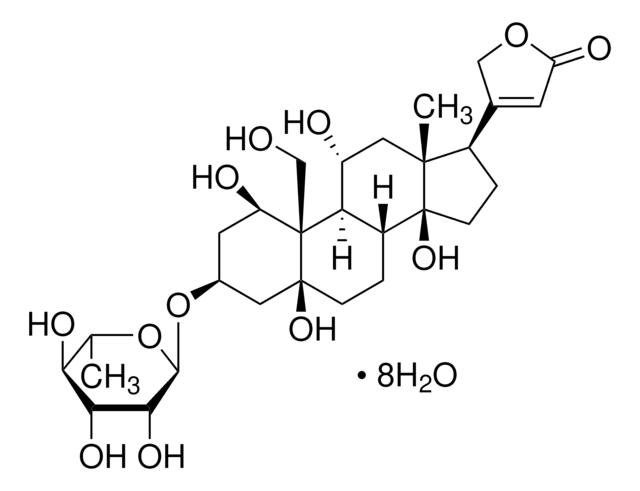S6626
Strophanthidin
Synonym(s):
3β,5,14-Trihydroxy-19-oxo-5β,20(22)-cardenolide, Apocymarin, Convallatoxigenin, Corchorin, Corchoside A aglycone, Corchsularin, Cymarigenen, Erysimupicrone, K-Strophanthidin
About This Item
Recommended Products
Storage temp.
−20°C
SMILES string
C[C@@]12[C@@](CC[C@@H]2C(CO3)=CC3=O)(O)[C@]4([H])CC[C@]5(O)C[C@@H](O)CC[C@]5(C([H])=O)[C@@]4([H])CC1
InChI
1S/C23H32O6/c1-20-6-3-17-18(4-8-22(27)11-15(25)2-7-21(17,22)13-24)23(20,28)9-5-16(20)14-10-19(26)29-12-14/h10,13,15-18,25,27-28H,2-9,11-12H2,1H3
Inchi Key
ODJLBQGVINUMMR-UHFFFAOYSA-N
Looking for similar products? Visit Product Comparison Guide
Application
Biochem/physiol Actions
signalword
Danger
hcodes
Hazard Classifications
Acute Tox. 1 Dermal - Acute Tox. 1 Inhalation - Acute Tox. 1 Oral
Storage Class
6.1A - Combustible acute toxic Cat. 1 and 2 / very toxic hazardous materials
wgk_germany
WGK 3
ppe
Eyeshields, Faceshields, Gloves, type P3 (EN 143) respirator cartridges
Choose from one of the most recent versions:
Already Own This Product?
Find documentation for the products that you have recently purchased in the Document Library.
Customers Also Viewed
Our team of scientists has experience in all areas of research including Life Science, Material Science, Chemical Synthesis, Chromatography, Analytical and many others.
Contact Technical Service














